Catching carp in the spring begins in different ways, depending on the region: in the southern regions it may be the month of March, and in the northern regions it may be the month of May. It all depends on the intensity of water heating, the nature of the reservoir and other factors.
Spring fishing for carp is an activity that requires a lot of patience, endurance and professionalism, as the fish is not active, it bites sluggishly, and it is not easy to catch it. As the water warms up, the activity of the carp begins to increase. The peak of activity falls on the period when the water warms up to +14ºС, then a good bite of carp is also observed. Usually, the water warms up intensively when the weather is warm outside for several days.
After a long stay of the fish in conditions of lack of oxygen, the carp is primarily engaged in saturating it, and only then, having felt a surge of strength and energy, it proceeds to the process of searching for food. On ponds where there is no current, and the lack of oxygen is felt more critically, the biting begins later, for about 3-4 weeks. If in winter period engage in punching holes for oxygen to enter the upper layers of the water, then the biting may begin a little earlier.
In the spring, carp prefer to stay at depths where the sun's rays penetrate, and this is no more than 2 meters. At the same time, on the river, carp chooses places where there is not a strong current and the water has time to warm up. Carp feeds only in warm water, so places where the water warms up will be promising, but deep places and places that are in the shade of large trees are unlikely to be of interest to carp.
Closer to summer (in the month of May), when the water has almost warmed up to the desired temperature, and it becomes more and more difficult to find feeding places for fish. The higher the temperature of the upper layers of water, the deeper the carp climbs. These may be pits in the area of the topnyak, where the bottom is covered with shells. As a rule, near such a place, there can be a lot of underwater vegetation, where carp sometimes feed on young shoots. Choosing a place between these objects, you can count on a successful hunt for carp.
Tackle selection
Since the carp prefers to stay closer to the surface in spring, it is better to catch it with an ordinary float rod equipped with a thin fishing line. The more sunlight, the more the water warms up and the activity of carp increases, therefore, anglers switch to catching carp on the feeder. The feeder is a bottom tackle, so during this period it is used little, especially in deep waters.
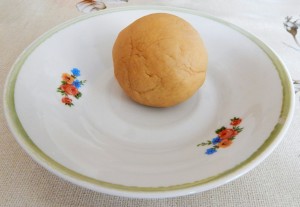
equipped with a feeder having a certain weight. After casting, the feeder with bait falls to the bottom, after which the bait begins to wash out of the feeder, forming a feeding spot. The design of the feeder is such that the baited hooks are hidden in the feeder. Once on the bottom, it falls into the field of view of the carp, and he begins to try the bait, sucking it into his mouth. Together with the food, he sucks in the baited hook. To lighten the weight of the hook, a foam ball is placed on it.
During this period, a crown can be quite effective tackle. It is a piece of pressed cake (makuha) attached to the main fishing line. Hooks with a nozzle are fixed on a cake bar, after which the cake sinks to the bottom. Under the action of water, the pressed cake gradually softens, and the fish begins to feed.
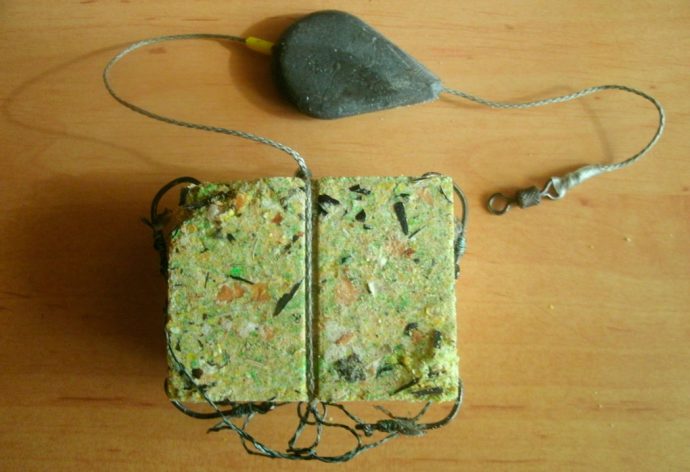
At the same time, she also swallows baited hooks (as in feeder fishing). is a very effective tackle, while it is very important that the pressed cake has the correct density. If the density is low, then the bar will quickly dissolve in water and there will be no positive effect, and if the density is high, then there will be no effect either, because the bar will dissolve in water for a very long time, and is unlikely to interest the fish. Optimal time resorption of a 50x50x50mm bar is about half an hour.
Bait and bait for carp
In the spring, you need to be very careful with bait, because the fish can get satiated very quickly and bites can not be seen. During this period, the main task is to bait the carp, but not to feed it. As the water warms up, the carp's appetite grows, but before it spawns, it still won't be able to eat a lot. Therefore, it should be purely symbolic and low-calorie.
As for the hook attachment, this case it is very important to know what the carp eats in this reservoir. It can eat both underwater vegetation and all kinds of mollusks, crustaceans, worms. Therefore, the nozzle on the hook must be appropriate: either of plant or animal origin.
In the spring, before spawning, you should not get carried away with boilies, especially large ones. It is better during this period to give preference to smaller balls. If the water has not yet warmed up, then you can use aromatic additives with the smell of garlic or ginger, and when the water is heated, sweet smells, like vanilla, will show themselves well.
For bait, you can prepare a mixture of:
- chopped worms
- boiled cereals (barley, corn, peas)
- bloodworm
- makuhi.
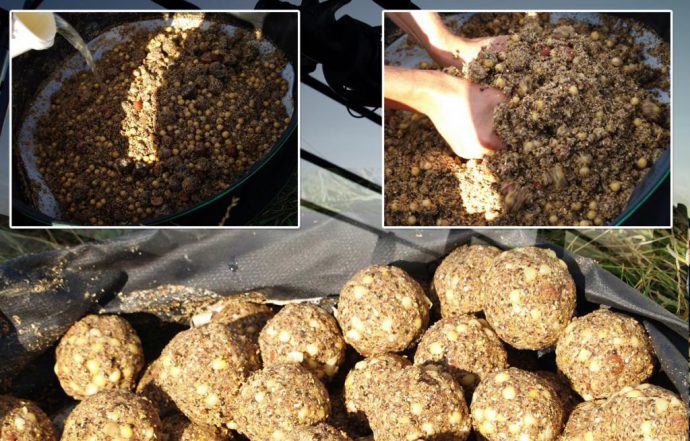
In order not to overfeed the carp, the bait should contain more components of plant origin. Such a nozzle as a dragonfly larva is very catchy, but it is quite difficult to find it. If a carp delicacy is found, carp hunting will be remembered for a long time.
In the spring, you can catch a trophy specimen of carp, and even with caviar, useful and nutritious. At the same time, it must be remembered that caviar is the future fry of fish (carp) and this at a time when fish stocks in our reservoirs are declining rapidly. Therefore, when going fishing in the pre-spawning period, one should not forget about this. It is better to let the fish spawn and only then, you can start catching it.
After spawning, a strong zhor begins in the fish and the probability of catching a large carp increases greatly. During this period, fishing can be the most productive, and fishing when it is warm enough outside is doubly pleasant.
In warm weather, carp prefer baits of plant origin, such as corn (boiled of course), peas, various mastyrki made from wheat or cornmeal. On the go, also semolina without which no recipe is prepared. At the same time, semolina can be added to bait both raw and boiled. You should not neglect the preparation of bait, because the result of all fishing depends on it.
Catching carp in spring — Video
Fishing for carp is one of the most popular destinations. fishing. Someone goes out to catch domesticated carp several times a season, devoting the rest of the time to other types of fish, for someone carp is the only trophy worthy of attention.
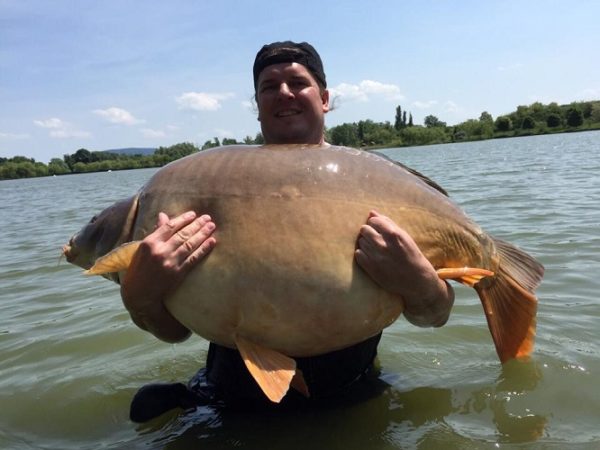
Not surprisingly, the sport of carp fishing, carp fishing, has been gaining momentum in recent years. Despite its high cost, this direction attracts an increasing number of fans, both here and abroad. Carp fishing, which originated among English anglers, captivates not only with its high catchability, but also with a special attitude to the object of fishing.
But we should not forget about the old ways of carp fishing, on which modern carp fishing was based. There are still many fans of traditional fishing methods. About new and old, about proven and modern ways fishing for carp, about its habitats, about baits and baits, read in this article and in other materials on our website.
To learn all the secrets of fishing, you must, first of all, have an idea about his lifestyle: understand where he lives, what he eats, how he endures winter, when he spawns, and so on.
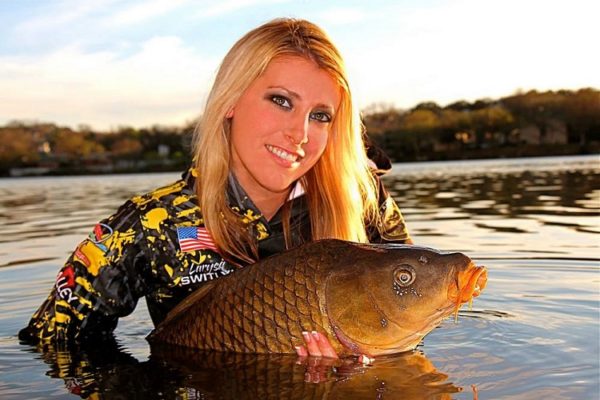
habitats
During the time that has passed since its cultivation, when a wild carp appeared domestic carp, he inhabited almost all reservoirs, ranging from ponds to rivers and reservoirs. Somewhere its habitat is not wide, while in other areas there is not a single reservoir where modern carp fishing would not be carried out. Taking into account the huge number of paid reservoirs, the number of carps began to grow exponentially.
Having started its existence in the wild as a carp, carp under a new name began to live in poods and small lakes, from where, thanks to high floods or erosion of dams, they safely got to their historical homeland - to the river. Thus, both forms of cyprinids can coexist in the same river: both wild and domesticated.
You can find carp at a variety of points on the bottom of the reservoir, but mostly the fish is in the original interesting places that are different from the environment. These are generally considered to be:
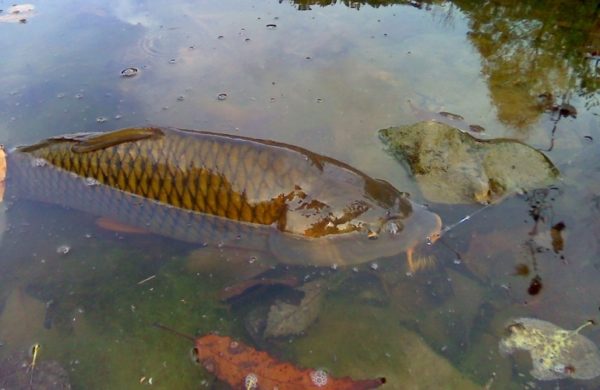
- pits and mounds on the bottom surface;
- brows and steps, other similar anomalies;
- pools;
- on rivers, places with reverse flow;
- places near snags and hydraulic structures;
- areas under the branches of trees hanging over the water;
- bottom areas with variable soil composition: clay and silt, stones and shell rock;
- boundaries of aquatic plants and clear water.
Seasonal features of carp sites
To ensure that fishing for carp is not idle, you can track the annual movements of fish.
- Winter. How to catch carp from under the ice? It is best to do this near the wintering pits. Good fishing points will be their favorite snag and places with dead aquatic vegetation. In winter, the water temperature in such places is several degrees higher than in the rest of the reservoir.
- Spring before spawning. Fishing for carp is most unpredictable at the beginning of spring, when the fish go aground to bask and look for larvae, worms and other goodies that have got here with melt water. However, a baited place, undoubtedly, will provide an opportunity for successful fishing.
- Before spawning. How to catch carp at this time? This should be done on the borders of future spawning grounds with brows and holes. Schools of fish gather here so that on the day when the water temperature becomes acceptable, 18-20 degrees, and the weather is calm and calm with even pressure, they begin their mating games.
- After spawning. You can catch carp immediately after spawning in the pits adjacent to the spawning ground and on the coastal edges. Subsequently, it occupies the usual summer camps.
- Summer. At this time, the movement of fish is more dependent on the weather, and you can find and catch carp day and night in those places of the reservoir that were indicated earlier in the previous section. The influence of weather on carp fishing will be discussed below.
- Autumn. The fish gradually slide down to the depth closer to the wintering pits. At this time, large carp are often caught, the most trophy specimens come across. After all, the domesticated carp ate over the summer and worked up fat before the long winter.
Daily seasonal features
Features of carp fishing vary depending on the time of day during the season. So, for example, in spring, the best biting begins when the sun warms up the water: after lunch and until the evening.
In summer, modern carp fishing is carried out around the clock: day and night. Sometimes it bites better at dawn, sometimes at sunset. And in the very heat, fish often roam the surface of the water, picking up fallen insects; in such weather it is good to fish near the reed edge of the lake for a crust of bread.
In autumn, sport fishing for carp is carried out during daylight hours, at night it bites only for a couple of hours after sunset.

In winter, carp fishing is carried out throughout the daylight hours in anticipation of that short cherished period of time when the fish have the so-called “exit”. However, there are carp fish that, like bream fish, sit in a tent at night over a well-fed hole, waiting for the moment of bite.
Effect of weather and pressure on biting
The atmosphere directly affects the characteristics of carp fishing. Like other peaceful fish, domestic carps prefer to peck when there is a long calm weather with constant pressure and light wind. Prolonged heat reduces the amount of oxygen dissolved in the water, and as a result, reduces the activity of the fish. Even rain, if it is quiet and even, is not a hindrance to carp fishing, but before a thunderstorm, the bite usually subsides.
The wind mixes the water, saturating it with oxygen. It has been noticed that in the heat the best bite is with cold northerly winds, and in cool weather a southerly wind is desirable.
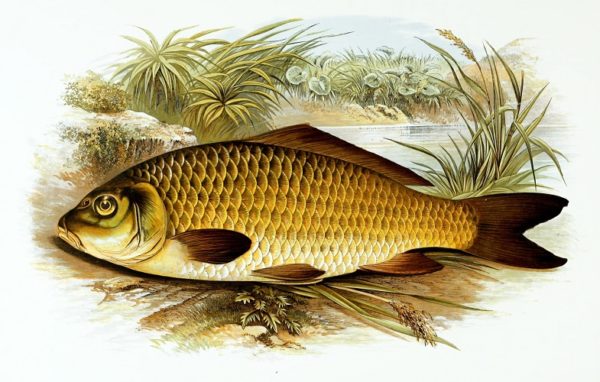
With a decrease in pressure, carp fishing is more successful, and activity continues even with a slight increase after passing the minimum mark.
Applied gear
Each angler has his own ways of how to properly catch carp, and as a result, they differ. It will take a lot of time to talk about this, so follow our publications on the site, here you will find a description of all kinds of carp gear, and stories about various ways carp fishing.
In the same review, we will list the methods of catching carp and their corresponding gear:
- Float rods: max, match, plug and lapdog.
- Bottom gear: English feeder, carp fishing, rubber band, hook.
- Original tackle: a crust of bread, a water-filled float, a circle, a top.
- Winter fishing rods: nodding and float.
At the same time, during the open water season, both coastal fishing and carp fishing from a boat are practiced. The latter is used when it is impossible to reach the chosen fishing spot with conventional coastal gear.
Catching carp from a boat is carried out with a fly or Bolognese fishing rod by casting from open water under trees hanging over the water or at the edges of dense vegetation: reeds, cattail or reeds.
Fishing rod equipment
Sports carp fishing, or carp fishing, is carried out with specialized gear. The founders of this direction were English fishermen, after which the method stepped across Europe and around the world. In this case, specialized rods, reels and other elements of gear are used.
In carp fishing, peculiar montages are used: for example, with PVA sticks and hair montage.
Among other equipment, we highlight various installations of the English donkey feeder, and traditional home-made options:
- paternoster;
- loop Gardner;
- symmetrical loop;
- asymmetric loop;
- helicopter;
- inline;
- anti-twist tube;
- rocker;
- nipple, the prototype of the "method" type feeder;
- carp killer - spring;
- crown;
- garland for donkey.
The best lures
In a story about how to catch a carp, one cannot do without a story about baits. This fish in the pond eats grass, reed stalks, molluscs, bloodworms and many more types of various plant and animal foods. Therefore, he pecks at all kinds of baits.
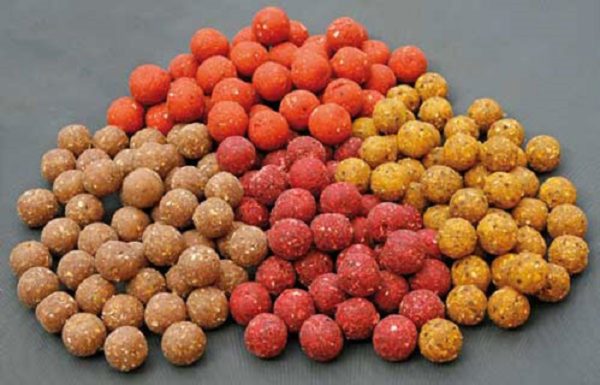
- earthworms and dung;
- maggots;
- caddis larvae;
- bark beetles;
- snails.
- potato;
- corn;
- peas;
- wheat grains;
- pearl barley;
- dough of various compositions;
- mastyrka;
- hominy;
- boilies sinking and floating;
- pellets;
- black and white bread.
Remembering the exploits of Suvorov, or Alexander the Great, other commanders, at first glance, there is no comparison with fishing, well, there is simply absolutely none, because the question, for example, is much easier to answer than any of the questions that arise during the conduct of hostilities.
But if you deal with the matter in more detail, then understand how to fish, and especially how to catch carp- a smart, even somewhere cunning and strong opponent, will be no easier than figuring out how to take a well-fortified city by storm. So the fisherman, to some extent, is a strategist, for, as will be seen below, the science of fishing is not at all simpler than military science.
Search
In any war, one of the main places is occupied by intelligence. Hunting for carp is certainly not a war, but even in such a matter as fishing, reconnaissance of the area is very, very important.
So, first things first, before any attempt is made, he must first be hunted down; for how to catch carp, or any other fish where it simply does not exist? I think it is logical, before you go to the reservoir - to collect as much information about it as possible.
The most common source of information we need is word of mouth. Rumors spread even faster than spam, but like spam they often lie, because fishermen are people who tend to exaggerate their trophies, not to mention the specimens that have gone down, and passing “from hand to hand” a rumor can become so full of untruths that it becomes difficult to isolate useful data from it. It's no easier than catching a fish in a toilet bowl.
In general, for starters, you should ask the fishermen you know who fished there, look for information on the Internet. If you are a "payer", then wander around their site and look at the photo gallery, so you will more or less accurately determine how many fish are found there and what size they are. The main thing you need to know is that fishing in a wild pond differs from fishing in a "paying place" in the same way as a sea battle from a land battle, so you need to pay attention to different points and details.
In natural areas frequented by anglers, carp often graze in places where floaters or "bottomers" are caught. Catching with a feeder, for example, involves the use of a feeder (how to catch carp on a feeder is a separate conversation altogether), which means that part of the feed falls on the ground, and then the carps pick it up. They also need food from floaters, that is, bait, which, usually, inexperienced or inexperienced fishermen do not spare, and professionals often throw the rest of the bait into the reservoir after fishing, which, without even knowing it, bring carps to this place.
In "payers" the fish is collected in the places of feeding. And the task is to find such a place. However, having found a stationary feeding point, one must also take into account that the fish are accustomed to coming to it at a certain time, which we do not yet know, and now the problem is reduced to determining this time.
Very often, "payers" feed fish from boats, and at a time when the fishing day is over, which makes it difficult to determine the right time and place. In this case, a daily ticket can save, then, after observing the reservoir, it will be possible to draw up a certain picture, more or less complete. So, if the feeders are stationary, then we find out at what time the feeding is done and try to catch closer to it, if the feed boat, then we fix the distance and, again, the time. In addition, it’s more interesting to catch at night: someone’s red eyes sparkle in the dark, and imagination draws huge fangs under them, mosquitoes shamelessly suck the remnants of blood, casually reducing the number of your nerve cells - romance, what else can you say.
However, back to business. Having noticed the distribution boat, you need to determine the distance to it. To determine the distance, it is enough to put a load instead of a snap and throw it into the wake of the boat, and then mark the distance on the fishing line, or count the turns of the reel. The bottom relief can also be determined with the same weight, because this is also important, as well as its composition, which in some cases is even more important than the relief. When dragging a load on a fishing line, it will not be difficult to determine what kind of soil is under it, and based on this, draw conclusions on how to properly catch carp.
For example, almost no one lives in deep silt rich in hydrogen sulfide, which means that there is no food for fish, but in a thin layer of silt, a lot of living creatures, which carp feed on, feel quite tolerably. You should also pay attention to the transition of silt to some other type of soil, sandy, clay or some other, with a high degree of probability, fish can be found in this place. In general, any heterogeneity of the ground or vegetation has always remained attractive to fish, including carps.
Of course, visual observation should not be neglected in any case. From the chains of bubbles from feeding carps, one can determine not only the approximate feeding place, but even, with proper experience, the number of fish and their approximate size. It is rather difficult to confuse bubbles produced by feeding carps with bubbles from carp or bream - carp have much larger bubbles and longer chains, because they dig much more intensively in the ground. Often, carp even dig a rather deep ditch in the ground when they follow the trail of a stern boat. Such a groove is clearly felt when checking the bottom with a load, and if it is found, it is worth trying to fish near it.
So, the conclusion: in the "payers" carp should be looked for near the feeders or on the route of the feeding boat. The time for carp to reach such places depends on the time of feeding, and is determined by observing the reservoir.
For a savage, this rule, of course, will not work, but for a "payer" signs for "savages" should also be taken into account, and they are as follows:
First, we check the places that are often visited by floaters, there is a very high probability of carp. Particular attention should be paid to such places to which there are exits from the pits, there is a heterogeneity of the soil and bottom topography, ridges of shells are suitable, or nearby thickets of various greens - water lilies, reeds and other things.
The time for carp to reach such places is usually weekends, and, as a rule, twilight, when floaters leave, throwing out the remnants of bait and bait, and when noisy bathers turn off, allowing the carp to collect food in a calm environment.
Water temperature
The next point, which, in addition to the presence or absence of food, affects the movement of carps in the reservoir, is the water temperature. In cold weather, carp, as well as other fish, are more comfortable in places where the water is warmer, catching carp in the summer - on the contrary, it is where it is cooler, and there is more oxygen in the water. Running around a pond with a thermometer is somehow stupid, and it’s not necessary, it’s enough to know what factors affect the temperature of the water and pay attention to them.
Let's say in winter, at a depth, somewhat warmer than in the upper layers of water, because all the fish get up for the winter in the pits. In summer, it is cooler at a depth, and the fish are there again, unless of course something actively interferes with it. For example, a thick layer of silt covering the bottom accumulates and periodically releases hydrogen sulfide into the water, which means that neither fish nor other living organisms will have a comfortable life there and, therefore, they are not there.
The temperature is also affected by springs or tributaries. Small streams less than a meter deep warm up in the sun much faster than a lake massif, which means that the places where such streams flow into a reservoir are a little warmer, and there is also food that the river brings, and therefore the place is very promising in cold weather. The spring, on the contrary, lowers the temperature of the water and saturates it with oxygen, and therefore, when it is hot outside, carp should be looked for near the springs. The most difficult thing is to catch carp in August-September, when it seems neither cold nor hot, and carp, fattening up for the winter, disperses in search of food throughout the reservoir, and sometimes climbs into places that are not at all compatible with logic.
Shelter
In addition to food and a comfortable temperature, fish need shelter, and therefore snags, thickets of water lilies and reeds are also suitable places. Water lilies, by the way, also provide shade where fish can hide from the sun, and young shoots can serve as food for carp and crucian carp, who are not averse to eating plant foods sometimes. This, by the way, is a useful habit of these fish, meaning not in general, but specifically for fishermen, because catching carp for corn, or other vegetable baits, is also very interesting. In addition, carps love all sorts of underwater anomalies: depressions and pits, or vice versa, hills, on sandy soil they like areas with silt, on silty - clean areas. Carps get food by digging in the ground, and therefore they are rarely caught on rocky or pebbly soils, however, carps may well stand on stones if they like this area for something, and go out to feed somewhere else, so you need to get rid of stereotypes and learn to think outside the box.
On such smooth rocky reaches, by the way, it is convenient to catch carp on the bottom, the bait does not get stuck in the mud, and is clearly visible, but often instead of carp, it is picked up by bream, which, incidentally, is also very good.
Other factors and places of fishing
In addition to water temperature, many other factors affect fish - pressure, precipitation, wind and much more, it seems not even an appropriate sneeze, can affect the outcome of fishing, but of course the weather is still more important. As a rule, it is not so important what kind of weather it is, it is much more important how stable it is. Carp stops pecking at changes atmospheric pressure, and a change down or up does not make a difference, but as soon as some kind of stability is established, activity and appetite return to the carp again. He begins to feed, but at the same time he changes his position, and here, in each specific case, you have to look: how to catch carp right now? So, for example, in a strong wind, it is better to catch from the windward side, that is, towards the wind. The water there is actively mixed and enriched with oxygen, and in addition, all the food from the surface is carried here, so the carps are likely to follow.
Catching against the wind is not very convenient, it is much easier to approach from the leeward side, where the water is calmer, and the wind in the back does not interfere, but even helps to cast tackle. But it doesn’t matter to the fish whether it’s convenient for us or not, their interests are more important for it, so inconvenient places become very attractive - few people catch there, and, therefore, no one bothers the fish and it doesn’t wait for us there, so it will peck confident and sure. Of these inconvenient places, it is worth noting the trees hanging over the water - this is a shadow, these are larvae falling into the water and this is an obstacle to fishing, and therefore most fishermen will not climb here and no one will scare the fish.
A solid wall of reeds is also a promising place, you can’t climb here without a machete, so no one will wade through the jungle and disturb the fish, and for the fish it is also a refuge and a source of food. But on the other hand, there is no one to bring fish in such places, and therefore, if there are no natural sources of food, then there is nothing to do here.
Good places to fish are flooded banks, that is, places that were once on the surface, especially roads (they are mainly found when you have to catch carp in an artificial pond). In such places there is a lot of rubbish, where various larvae and other living creatures that serve as food for carps settle, although there is also a high risk of a break in gear.
In addition to rubbish, the roads are also attractive because the asphalt surface, or rolled soil, is very dense and does not erode with water, or rather, erodes more slowly than the surrounding rock, and therefore, over time, forms an underwater hill with an extended flat plateau at the top. Fish in such places happens often, but I think you know how to catch carp in such places - one rod to a hill, the second to fall off it, even if this distance is only 30-50 centimeters. If possible, it is worth trying to throw the bait over the road, closer to the dump farthest from the coast, where fish are more likely to appear.
The man-made factor should not be discounted either, and if a sewer goes into the river, or something like that, you should hardly look for carp there - this fish is quite picky about water quality, and although it can live in polluted water, from tries to leave such places.
Catching time
As mentioned above, in the "payers" carp need to wait during feeding or in the late afternoon, when the anglers fold, sowing the bottom with the remnants of bait and. The latter is also true for wild waters frequented by fishermen. A person largely influences the life of fish, for example, in the beach season, it is difficult to find fish in places actively visited by bathers during the day, even when everyone has already dispersed. And on weekends, the fish often come up, only closer to the night, but you can decide how best to catch carp here, you can only try, because the situations on different reservoirs are also different, and it’s better to try not to generalize.
In general, the time and place of carp fishing seems to have been sorted out in sufficient detail. The main thing that we figured out is that the location of the carp is affected by great amount factors and their combinations, which are often not even known to us, and therefore it is very difficult to say where the carp will be exactly today without observing the reservoir for at least a week. Even some uncle Vasya from a neighboring pig farm, washing his tractor in the lake on Tuesdays, can significantly change the regime of this site, driving the fish away from this place on a certain day.
On this, perhaps, everything. When asked why it was only about fishing places and nothing was said about methods, I will answer that there are a huge number of ways to catch carp. To explain how to catch carp with a bait, or how to catch carp with a feeder - these are already two full-fledged articles, and these methods are just a drop in the ocean, well, that is, maybe not in the sea, of course, but at least in a bucket .
Dare, and do not be afraid of failures, gain experience, which, as you know, is priceless; and experience is what you get if you don't get what you want.
Semukh Grigory for the site site
Tackle for carp fishing
Bottom gear for carp
Feeder
Feeder is the best option for carp tackle for beginners who love this kind of fishing. strong fish who are not ready to shell out significant amounts of money for the purchase of special carp rods and all related attributes. In addition, as knowledgeable people assure, the feeder, with the right equipment and settings, is able to cope without problems with worthy specimens of fish, the weight of which can reach 10 kg.
For carp fishing with a feeder, a rod is selected that is strong and reliable, capable of effectively dampening fish jerks when playing. For trouble-free hunting for 6 ... 8 kilogram individuals, products up to 3.50 m long and 50 ... 100 g in dough are suitable. When fishing without feeders, you can use a lighter rod.
Standard feeder equipment for carp fishing includes:
- monofilament fishing line 0.25 mm in diameter; you can install a braided line that is stronger, but, due to the lack of extensibility, often does not withstand carp jerks at the stage of fighting and breaks;
- hooks: usually reliable, having a beard that prevents the fish from leaving; experienced carp anglers use hooks without a beard - they injure the fish less; the latter is especially important when fishing with further release of caught carps;
- feeders: usually used when catching carp at a distance exceeding 30 m; at closer places, a load of “olives” with a mass of 20 ... 30 g is sufficient.
carp fishing
The concept includes everything related to catching trophy-sized carp. As part of this direction of fishing, special carp rods, reels, accessories, all kinds of equipment have been developed that allow not only to activate and make the process guaranteed to be profitable, but also to save the fish from excessive injury.
in carp fishing - the main component and saving on them among fishermen is not accepted. They are produced powerful, durable, able to cope with 10 kg trophies without any problems. It is worth choosing a specific form according to the conditions of fishing: for example, if you do not need to catch carp on a small pond and cast the bait further than 50 m, then you should not spend money on a form with an increased test. But if you want to send a feeder over 100 meters or more, then you need to pay attention to rods with increased power, test.
The classic reel for carp fishing is considered to be big pit, characterized by deep and wide spools, on which thin braids can be wound. For catching large carp, spinless baitrunner reels are suitable, including the option of free rotation of the spool. They, as follows from experience, do an excellent job with the process, and are significantly cheaper.
The most common lines in carp fishing are braided lines, which can withstand a break of 15-12lb. They are especially good when fishing for carp at long distances. Monofilaments are also used, but thicker and less extensible. Recently, some fishermen have switched to fluorocarbon, but significant funds are needed to purchase it.
Leads are one of the important elements of equipment in carp fishing. They are used in 4 types: wicker, mono. Rigid and combined. The rigs themselves knit different type and differ in material, injury safety to fish, recoverability, etc.
In addition to the tackle itself, in carp fishing, much attention is paid to accessories and auxiliary devices that facilitate the process, a long wait for a bite, inspection of the fishing area, delivery of bait to the chosen place, etc.
Float tackle for carp
In addition to bottom tackle, many anglers prefer to catch carp with a float rod. This is explained by its greater “understanding” for most fishing enthusiasts, the simplicity of design and the habit that has been in each of us since childhood.
Carp on fly line
The fly rod, due to its design, is suitable for catching carp at depths of up to one and a half meters and at a distance of 5 ... 7 m from the coast. The process is necessarily accompanied by preliminary bait. You can catch carp with a bait from early morning until dusk. The best bait corn, maggots and worms are considered; often fired sandwiches of them.
The characteristics of fly gear are usually within the following limits: rod length 5 ... 6 m; a float with a carrying capacity of 1.2 ... 2 g with a bright and visible antenna from afar; fishing line 0.14 ... 0.20 mm; leash 0.12 ... 0.16 mm; hooks No. 12 ... No. 16. And be sure to land, which helps to cope with a solid instance.
Carp on a match rod
Carp fishing using a match rod is carried out at distances of 15 ... 20 m and begins with a search for the best fishing spot on the reservoir. These are, for example, edges separated by shallow water and significant depressions, which the fish must visit during the day, migrating aground and back.
After determining the place of fishing, its bait follows. There are many compositions offered, they should be chosen according to weather and other fishing conditions. Do not forget to add flavorings (according to the time of year) and nozzles, which are planned to be used for carp fishing, to the mixture.
For carp fishing, for example, a durable and relatively powerful telescopic rod of a progressive action, 5 ... 6 m long, is suitable. The equipment of a match fishing rod includes a spinning reel of 3000 ... 4000 numbers, a pair of spools for it, each of which is wound with a fishing line of different sizes: usually it is 0.25 mm and a little thinner (0.18, 0.20 mm).
Leads for a match fishing rod need to be prepared in advance several (up to a dozen) - with different lengths, with different hooks. It is impossible to predict in advance which of them will be the most successful, this is determined experimentally on a reservoir.
To guarantee long-range casts, the float is selected with a carrying capacity of 4 ... 6 g, with an antenna noticeable from afar. Accordingly, a sinker is installed on the snap.
After collecting the gear, the bait is planted (corn, worm, maggot or sandwich) and thrown into a baited place. Next - the expectation of a bite of carp and the hope for a worthy specimen.
The wait is sometimes long. The tackle itself is somewhat rude, because the angler always sees a bite with a delay - after the nozzle is sucked in by the carp and the fish moves to the side. Most often, the hook (of any size and size of the forearm) falls into the throat of the fish, from where it can only be removed with an extractor. Based on the latter, it is better to use smaller hooks, which is guaranteed to increase the number of successful bites and hope for a good catch.
Carp on a bologna line
The Bologna rod belongs to delicate float gear and is used when fishing for carp weighing up to 2 kg. It, unlike fly gear, allows you to fish at any depth, which is its advantage.
The usual length of a Bolognese fishing rod for carp fishing is 5 ... 6 m. It is better to buy a modern lightweight blank, with which the process is more comfortable.
There are no special claims to the coil in the equipment. If you do not plan to send the nozzle somewhere far away, a medium-sized product will do; and not only inertialess, but also of inertial type. The main thing is that it is convenient to lower and reel in the fishing line when casting tackle, when playing fish.
For playing carp up to 2 kg, a 0.2 mm fishing line is enough. If it is necessary, according to observations of bites, thinner, then it is better to put a smaller diameter leash.
The float can be any, but products with a thin body are more stable in the wind, have good information content even in normal weather. It is more expedient to carry out loading on a carp composite, from 2...3 pellets. Hooks fit straight, thin and small.
carp on plug
Plug tackle is a sport type and catching decent carp with it is like an extreme activity. It is rarely used in carp fishing, although it has undeniable advantages:
- versatility: allows you to catch the most different fish in various reservoirs;
- the ability to hold the nozzle exactly on the baited place, which is problematic with other gear;
- accelerated reaction to bites;
- unforgettable sensations when playing carp.
In carp fishing, plug rods of 10 ... 12 m and longer are used. The main fishing line is set to 0.16 mm, its free end is equipped with a leash of 0.12 ... 0.10 mm. The float is chosen in approximately 1 g capacity; The load is multi-component, from a whole set of pellets of various weights, the heaviest of which is placed at the leash.
Carp fishing on a plug necessarily requires preliminary bait, which is carried out with a ready-made branded or self-prepared mixture with the addition of flavorings. Carp approaches the baited place within an hour, after which the main fishing begins. Nozzles: maggots of different colors, chickpeas, corn, pellets (granules) with a variety of smells and tastes.
Bait for carp
Groundbait is one of the main components of carp fishing. Its quality, the correct selection and delivery to the right place is often the main factor in the successful catching of this wonderful fish.
Domestic bait
Due to some increase in the cost of imported bait mixtures, bait produced by Russian companies has recently been heard by most carp anglers. Among the latter, Sabaneev, Fishbait, Minenko can be considered the best in terms of the range offered (base mixes + granular additives + soils + others). A little weaker with a set for making up working mixtures for Fish Dream and "Float".
Most worthy carp baits are based on crackers, the quality of which is decisive in the properties of working mixtures. Well, if they are made from a biscuit specially baked for making bait. They do not contain perishable fats, which affects the possibility of long-term preservation of bait, the ability to obtain from it (when kneading) a mixture of optimal consistency.
Bran is another component of carp baits. Some manufacturers add them a little to the mixture, like a baking powder; others, trying to reduce the cost of products, replace crackers with this ingredient. The latter is also wrong from the point of view of optimal bait mixtures that can attract carp, and they should cost much less than they are offered in stores.
V pure form even a good bait mix cannot be used to bait carp. The best effect is achieved when a combination of different components is used, which may differ for various conditions carp fishing. For example, one of the options may be: pellets (60%) + bait (30%) + canned corn (10%).
In the presented proportion, the bait actually plays the role of a binder and allows the pellets to quickly not fall apart in the total mass of the bait balls. It, by its nature, helps to attract small things and scares away carp; therefore, if possible (for example, when using a bait cup in pole fishing), it is better to refuse bait altogether. How not to add hemp to the composition in reservoirs in which a lot of roach lives along with carp - both types of fish love it very much.
In strongly silted reservoirs, mixtures with a sour smell (plum, pineapple) give good results for carp. As an example, a combination of "Karp Plum" from the line of compositions "Fishbait Gold" and pellets of the same company 9 mm in diameter can be considered. The latter, by the way, are made from fishmeal.
Sweet-tasting baits (honey, strawberry, banana, tutti-frutti, peach) show the best results in reservoirs of the southern regions of the Russian Federation. This can be explained by remembering that such odors spread best in warm waters.
If we catch carp in spring or autumn, when the water is already cooling, baits with fishy smells are considered the best ( fish meal and feed).
Sabaneevsky bait
This domestic bait is one of the first to appear on the domestic market. It is not critical, although it works well and competes with expensive imported mixtures.
The main, with which the product line began, the company's bait is the Unikorm mixture; in addition to it, there is an inexpensive "Base" in dark and light color options. The latter goes well in combination with Russian and imported bait.
For fishing on the current, Sabaneev offers his own soil for the formation of compositions, which, when mixed, is added to the already moistened bait. For feeder carp fishing, we can recommend the “Sabaneev Feeder” composition, which has proven its effectiveness, for example, on the suburban paysites.
Bait from Fishbait
The range of baits produced by this company is able to satisfy any fishing conditions. For example, carp near Moscow respond well to a combination of branded pellets (9 mm) with universal mixture Fishbait Gold with canned corn. For muddy ponds, large carp are guaranteed to respond to the described mixture in black. In addition, branded compositions "Karp Pineapple" and "Karp Plum" will bring success.
When catching carp in warm water, it is better to use branded bait "Carp Peach", "Carp Tutti-frutti". Good results are shown in any reservoirs by a mixture of branded feeder and carp bait.
Bait for carp
In general, all baits used to catch carp are divided into meat and vegetable. Among the first are dung worms, helping out more than once and not one of the carp fishermen. In the same row, all kinds of larvae, maggots, flies, bloodworms - especially sandwiches from them.
Summer baits
In summer, carp pays more attention to vegetable baits: legumes and cereals of all varieties. They are used in their natural form, fried, steamed and boiled. From them, porridges (corn, pea, soy) are prepared for various equipment and dyes, flavoring essences are added.
Among the successful summer baits for carp canned corn, peas. A sandwich of these baits and maggots is especially tasty, which often helps to catch trophy fish.
In the summer, some fishermen fish for carp with rum flavored dough. You can buy or cook your own mastyrka, then add flavored drink. Balls the size of a mandarin are made from such bait, which are offered to carp impaled on a hook of the appropriate size.
They catch carp in the summer on a crust of bread, which is pre-soaked in honey or milk, linseed or hemp oil, raw egg. You can buy seafood pellets, add flavoring and eggs to them - the bait is ready.
Boilies
Boilies are among the natural baits that give good results in carp fishing. They are sold on the market, if you wish, you can do it yourself. For the latter, as an example:
- equal amounts(a glass) of cornmeal (or semolina) and bird food are ground in a coffee grinder;
- add soy (half a cup), fish and bone (a couple of tablespoons) flour;
- also add sunflower oil (two tablespoons), cinnamon (five teaspoons), garlic and cumin;
- at the end, four raw eggs are introduced into the mixture.
From the mixture obtained after mixing, a hard-boiled dough is kneaded, boiled, rolled into balls of the desired diameter and dried.
carp fishing
Previously, it was believed that carp can only be caught in the summer months after a good warming of the water. Today, the approach to the process has changed, there is a lot of evidence that it can be caught almost at any time of the year. Although the intensity of the bite is very different, which affects the choice of tactics and gear.
January is one of the most unproductive months for carp fishing. Fish during this period are sluggish and practically do not respond even to the most sophisticated baits. To match this period, and February - winter wilderness, reducing to a minimum the vital activity of not only carp, but also all other fish.
March in the middle lane is characterized by a sharp decrease in the oxygen content in the water of reservoirs, which negatively affects the movement of carp and its biting - it practically stands still and is not interested in anything. April begins with the awakening of fish from hibernation, but its activity becomes noticeable by the beginning bites only from the second half of the month.
May is the month in which the water already begins to warm up well, which leads to the activation of the life of the carp. The fish moves to warm areas, which are often located almost near the shore, and starts to bite well.
June is the time of carp spawning and the period when it departs from the spawning process. The fish bite until the middle of the month, but badly, and then completely ceases to be interested in food.
July is the month of post-spawning zhor, so the carp bites very actively all day and night and falls into the prey of anglers. In August, the activity of the carp increases, as it begins to eat intensely in anticipation of the imminent onset of cold weather; this month is also lucky in terms of carp fishing.
With the advent of September, carp begin to gather in flocks and seek shelter in deeper waters. The second half of the month is the period of intensification of the carp feeding process. The whole period is favorable for successful fishing.
October is the last month in which you can catch carp in clean water and when he still shows some interest in food. But it also disappears by the end of the period, and the fish becomes passive and poorly responsive to any actions of the fisherman.
November and December are characterized by the passivity of the carp, the absence of its movement even over short distances. You can catch him, just slipped the bait under the very mouth.
Catching on a method
This version of carp fishing is feeder and is distinguished by the use of a special Method-Feeder, developed in England. It is strung on the main line through the central through hole and contains 3 plastic wings, forming a skeleton, which is designed to hold the bait, the ball of which is formed around the entire structure. A small swivel is installed at the end of the fishing line, to which a short leash with a hook with a hair mount is tied.
Bait, if you catch carp using the method, is prepared bound, which slowly dissolves in water. They refuse to add maggots to the mixture, as they destroy it faster than necessary.
When catching carp on a feeder, the bait with a hook is pressed into the bait ball before casting. She will be at the bottom next to the bait and quickly found by carp. When biting, the fish self-hooking occurs, so the feeders should weigh at least 35 g.
Fishing in the spring
At this time, looking for carp stands in shallow waters, where it goes out to bask and move away from winter. Here he finds his food in the form of various crustaceans, insects, young algae. It is good if such a place is constantly illuminated by the sun, which increases the likelihood of finding fish there all day.
You can catch carp on a feeder, but because of its high activity, the rod must be powerful and durable. Main line 0.20…0.25 mm. Suitable for equipment, for example, paternoster, which is knitted by a fisherman on the shore, right before catching fish. Leash up to 40 cm; container feeders made of plastic of medium capacity and weighing 15 ... 30 g.
There are subtleties in spring carp fishing:
- the need for maximum accuracy of casting bait, which ensures the locality of the bait spot and increases the catchability of the fishing spot;
- constant variation of baits on the hook, their combinations;
- the use of flavors for processing nozzles; in spring, the most successful attractants are essences with the taste and smell of dill, garlic; you can try mixtures made up of different peppers.
Catching in the heat
The elevated temperature outside is a serious test not only for carp, but also for the angler. After +25°С, the fish practically ceases to eat, and huge efforts and knowledge are required to catch it. Among the tips on how to catch carp in the heat, the following can be distinguished:
- lure carp better test: it is applied to the surface of the boilie, and prepared from flour, using eggs instead of water;
- if you catch carp on boilies, then they need to be “flavored”: on the surface of the nozzle you can apply, for example, grains of garlic, sweet pepper; particles can be attached to the surface of the boil, lubricating it, for example, with honey, sugar syrup;
- boilies (grains), before throwing, are covered with gelatin (carps like it very much because of the presence of amino acids), to which aromatic substances are added; the nozzle is first dipped in water, and then in powder; do this several times, resulting in a thick gelatinous shell;
- a combination of baits - the use of a "snowman" (simultaneous planting of sinking and floating boilies) can cause a very sluggish carp to bite;
- increasing the buoyancy of the bait - carp in the heat almost do not dig in the mud and can only react to floating food;
- when fishing for carp on corn, it is better to use its foamy form, which does not sink in the mud and remains an attractive bait for carp.
Let's talk directly about carp. In spring and autumn, this fish is gluttonous and omnivorous. Eats carp everything and in large numbers. That is why it is quite easy to catch it. Carp is not a couch potato, it is fast, moves well around the reservoir, changing one place to another. It should be noted that small carp from medium and large is very different, including appetite.
Correctly determine the place for fishing: this fish does not like fast-flowing waters, with cold water. Her abode is warm ponds and lakes. There are carp all over the place.
As for the fish itself, you can often hear such a name as carp. This is a domesticated carp. This fish is strong, cunning, reaches fifty kilograms in weight, in the heat it hides in pits, in thickets of reeds. Once hooked, her strength is enough to break the line or cut it with a sharp fin, so the fight for every carp is a serious challenge for the fisherman.
What is the best way to catch carp in summer?
The question of bait and feeding has always been acute for fishermen. Despite the fact that carp is not a stupid fish, it is unpretentious in the choice of food. She can show caution only if the bait is potentially not edible or if circumstances unpleasant for the fish were previously associated with it. Consider a few simple baits for catching carp in the summer.
Bread
Fishing for carp for bread is very common today. Perhaps this bait can be considered ancient. Some time ago, they somehow forgot about it, but with the appearance of imported boilies on the shelves of stores, they suddenly remembered.
Bread is needed white, only the pulp, the crust is not needed. Large balls are rolled from it with hands, in which the hook is carefully hidden.
Carp will be careful with this type of bait. At the slightest danger, he will refuse it. For better effect, you can add a drop sunflower oil. Today, the use of aromatic additives is popular. Experiment! Nobody forbids doing this.
Dough
Dough for carp fishing is also quite common. There are many recipes. If you start asking experienced fishermen, then each of them is ready to tell you his exceptional way of cooking. delicious dough. Flour is taken as the basis, it can be:
- wheat;
- corn.
Take whatever is available. Cooking method:

Carp loves this bait very much. The hook is neatly hidden in the dough. A large carp also chooses larger pieces, but it will not pay much attention to small ones. Do not forget that the size of the hook must correspond to the planned size of the fish.
Corn
Corn is the most famous bait for fishermen. And the carp loves it. Despite the fact that a huge number of mirror, scaly and naked carps have been caught on corn, the disputes around it do not stop. The first dispute concerns the choice of the corn itself:
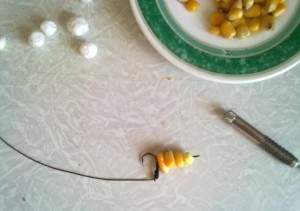
Everyone is free to choose the method that is more suitable in a particular situation. Such experiments are good for fishing.
Corn is an excellent bait not only for the summer period, but also for spring and autumn.
The second dispute is whether to put the corn on the hook or not. Some advise to put on and not worry about it, others are categorically against it. Why? The thing is that carp can really feel the metal in their mouth and spit it out. Corn grains in this regard are small in order to perfectly hide the hook from the fish. If all else fails, try making a hair rig.
The thing is that the fish does not grab the bait, barely approaching it, but, as it were, sucks it into its mouth, trying to taste it. At the same time, having enjoyed the food, she does not notice the hook. It is very easy to make such equipment.
Other options
What else can you successfully catch carp in the summer? There are actually a lot of baits. Here are some of them:
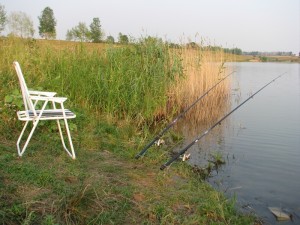
These are natural grain feed options. Porridges can be with the addition of cake and flavorings. The main thing is that the pieces are medium, not small.
For those who have absolutely no time to prepare the bait, you can buy boilies. They are sold everywhere today. It is important to inform the seller in advance that the bait is needed specifically for carp.
This fish is also well caught on an earthworm or maggot. Some fishermen claim that carp often prefer live bait. The choice is always up to the fisherman.
It is best to go fishing with several lures at the same time, alternating between them.
When is the best time to fish for carp in summer?
Catching carp in the summer is quite simple. Best time for fishing in summer:
- Early morning (when it is still dark).
- Late evening or night (especially if the days are hot).
- Before the storm in the afternoon.
This is due to the fact that despite the fact that the carp loves warm water, the heat tires him. If the climate in the region is hot, it is better to go fishing at night. On hot days in the evening, carp will not peck. Most the best time- cloudy weather, light drizzle.
Carp is a cautious fish, quite smart, but gluttony will be in the hands of any fisherman. It is carp that is best caught in the summer, when other individuals go to the bottom and into deep holes.
Many fishing enthusiasts often wonder when it is best to catch carp or its river "brother" - carp, as well as what gear and bait to use so as not to be left without a catch. After all, both of these fish are distinguished by caution, great strength and endurance, inconstancy of taste preferences, and many others. etc., which can cause some difficulties even for an experienced angler. Therefore, our task is to tell the most important things about catching carp and carp.
Fishing for carp and carp has similar requirements and approaches
Where is the best place to catch carp and carp
Both of these fish have fairly similar habits and belong to the same family. Not every angler is able to find at least some differences between them. It combines carp and carp and what water areas they choose to live in. They like deep, warm and large water bodies, where there is a good food supply, sufficient oxygen and minimal current. Therefore, these fish mainly live:
- in lakes and ponds;
- in large rivers with little current;
- in various reservoirs;
- in oxbows, bays and backwaters.
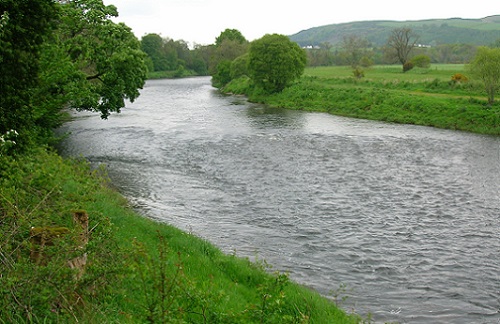
Both carp and carp can be found on the rivers
The main thing for carp and carp is that within the reservoir there are places with a clay or muddy bottom, as well as areas with snags, thickets of reeds, reeds, cattails, etc. At the same time, the depth was at least 2-3 m even in summer. Ideally, if there are water areas at all, where the distance to the bottom exceeds 5-7 m.
As can be understood from the above, the best places for catching carp and carp are:
- barbed areas;
- snag;
- thickets of reeds;
- deep pits, depth differences, whirlpools, etc.;
- quiet and calm backwaters;
- water areas with a slow current (for example, inversion or bend of the river) and many others. others
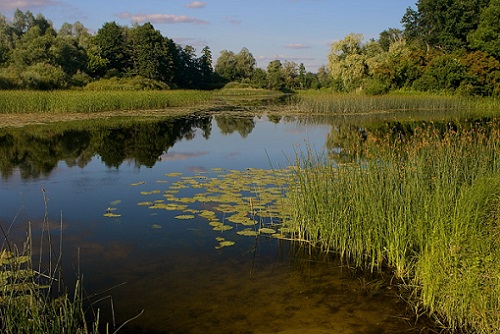
When choosing a fishing spot for carp and carp, you should pay attention to dense thickets and backwaters.
In closed waters, it is often well caught near the windward shore. Firstly, there is more oxygen here, which "comes" along with the wave and ripples. Secondly, various food is washed here from other water areas, which cannot but attract fish.
When is the best time to catch carp and carp
Many carp fishers will answer this question with a simple phrase - " all year round". And this is true. With proper preparation, carp and carp can be caught at any time of the year. However, in winter, fishing is complicated by the fact that the fish becomes passive and feeds extremely rarely. You have to go to various "tricks", which we will discuss in another article.
Fishing is much more effective in spring and summer. Warm autumn is also a great time to catch carp or carp well. Why? The fact is that these fish positive influence renders warm water. To be more precise, the comfortable environment for them is water, the temperature of which varies from 18°C to 28°C. As a rule, such temperature regime in reservoirs it is observed from May to September. That is why these months are becoming the favorite for anglers.
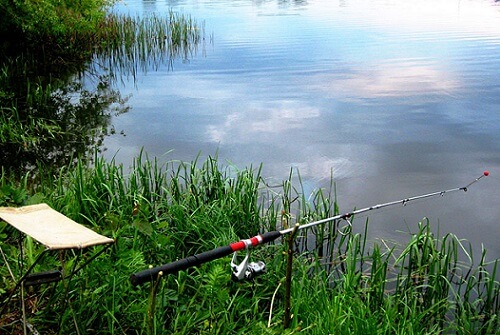
The best time for fishing for carp and carp is summer or warm weather.
And yet, the ideal (if I may say so) time for catching carp and carp is the beginning of summer. Firstly, the water warms up to the desired temperature, contributing to the motor and food activity of the fish. Secondly, the spawning ends, in which the bite always noticeably weakens. July and August are also relatively favorable months for fishing for carp and carp. Unless the heat and heat can make their own adjustments, forcing the fish to go to great depths and stop eating.
As for specific hours, most often carp and carp feed more actively in the morning and evening. On cold days, on the contrary, at lunchtime, when the water has time to warm up a little. Large individuals can go in search of food and do only at night. Naturally, all this must be taken into account by the angler.
In addition, in order to achieve a good catch, you will have to pay attention to weather conditions. As we said above, summer heat bad effect on bite. After all, at high air temperatures in water, the oxygen balance worsens. When it gets colder or the weather changes, carp and carp also feed inactively.
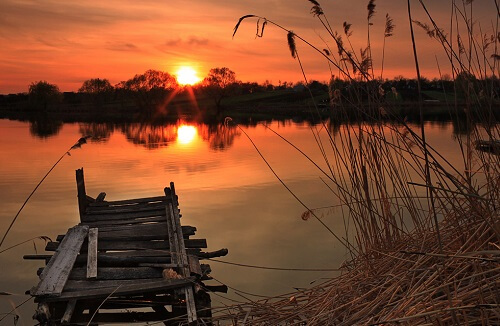
Depending on the season and weather, the best bite can be both in the evening and at other times of the day.
Much more productive in the summer is fishing in cloudy and warm days with little wind.
What to catch carp and carp
Both carp and carp are omnivorous fish. Therefore, they are caught on a variety of baits. In spring and autumn, they prefer animal food rich in protein, so fishermen mainly hook worms, bloodworms, maggots, burdock moth larvae, grasshoppers, crayfish meat, various insects, boilies of appropriate tastes, etc. summer days with well-heated water, carp or carp prefer vegetable baits, including:
- bread;
- dough;
- pearl barley;
- peas;
- corn;
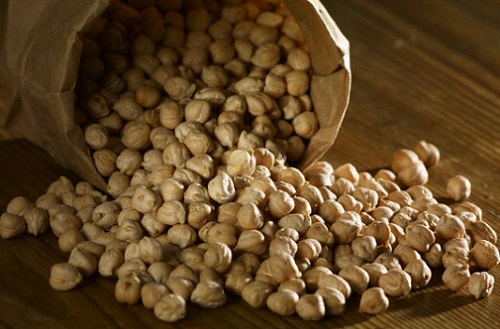
Carp with carp bite well on chickpeas
- pellets;
- boiled potatoes;
- cake balls;
- chickpeas and more others
Of course, catching carp and carp should be accompanied by feeding. To do this, you can use ready-made dry mixes, which are kneaded in a pond by adding local water, or bait prepared on your own. Various ingredients can be included in its composition, but, as a rule, the basis is all kinds of cereals and cereals, potatoes, cake, flour products and many others. others
A significant role in catching any cyprinids is played by attractants and flavors.
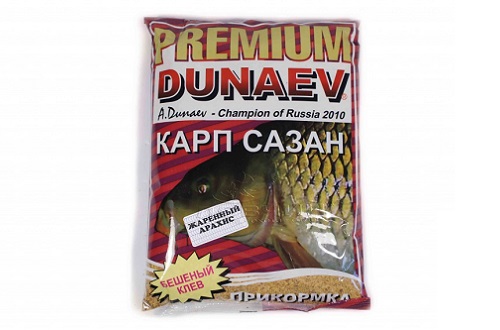
For a better bite, you should feed the fish
It can be:
- Dyes or visual attractors. Sold in both liquid and powder form. They serve to make the bait brighter and more noticeable. Or, on the contrary, they help to darken the bait, giving it the color of the bottom. After all, carp or carp can be frightened by an incomprehensible colored spot and not approach the nozzles.
- Chemical carriers of odors. They are glycerin or alcohol based. Most often sold in a liquid state in small containers. Sometimes they are also found as sprays for processing nozzles before casting. Taste palette almost unlimited: from the usual and familiar smells of garlic, mint and honey to "exclusive" and unusual aromas - mulberry, red krill, sweet spices, etc.
- Deeps. These are special flavors designed to impregnate bait and bait. They come in liquid, powder and even gel form. Dips can enhance the flavor of a bait or completely change it. Some are also able to give them a different color.
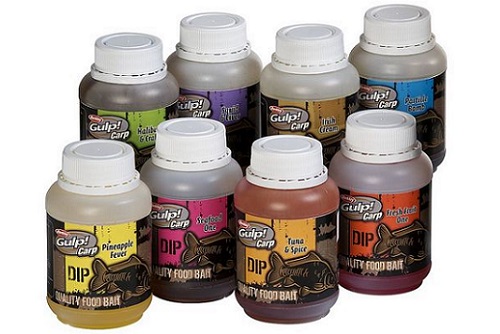
Dips are used to make the bait more attractive.
- Essential oils. Also quite productive attractants when fishing for carp. They dissolve well in water and are able to lure fish from both short and long distances. Most often carp anglers use eucalyptus, geranium, juniper, clove and garlic oils.
What tackle is suitable for catching carp or carp
Continuing our story about how to catch carp and carp, let's dwell on the gear that is used to catch these fish. If we talk about the most popular, then these are:
- feeder;
- float rod;
- crown;
- classic donka;
- "pacifier";
- "spring";
- gum, etc.
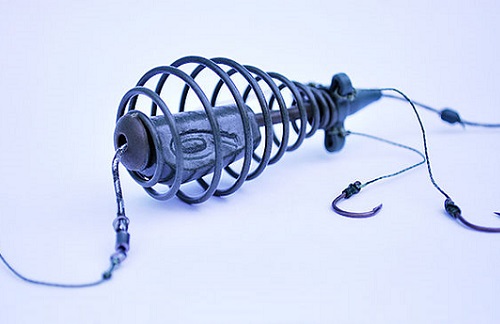
You can catch carp and carp on a spring
The most "exotic" tackle is jig spinning with edible rubber nozzles. It well imitates the movement of small worms, mollusks, and other aquatic animals, which carp eat with pleasure. The main thing is to stick to slow wiring and make long stops.
Each tackle used for catching carp and carp has both advantages and disadvantages. Which one to choose - the fisherman decides, taking into account his personal considerations, experience, features of the reservoir, time of year, and many others. etc. Although the majority of professional carp fishers still prefer various donks.
In any case, when choosing gear and mounting equipment, you need to consider:
- strength, weight and power of the fish;
- her care and concern.
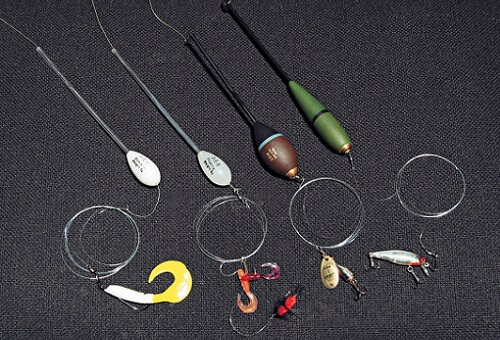
When mounting gear on carp and carp, you should choose the appropriate components
As a result, it is important to find a "balance". On the one hand, the fishing line must be strong enough and reliable, and on the other hand, it must be invisible. The same goes for hooks and sinker weights. After all, by overweighting the equipment, the angler runs the risk that when biting, the fish will be afraid of unnatural resistance and throw the nozzle. A small weight of sinkers will lead to the fact that the bait will become mobile under the influence of wind or current, will break away from the bottom and will hardly attract carp or carp.
Therefore, be guided by the approximate size of the fish that you plan to catch or that is found in a particular reservoir. For catching small carp and carp (up to 3 kg), it is enough to equip a feeder or an ordinary fishing rod with a monofilament with a thickness of 0.15 to 0.25 mm. For larger trophies, it is better to take a fishing line with a cross section of 0.3-0.35 mm.
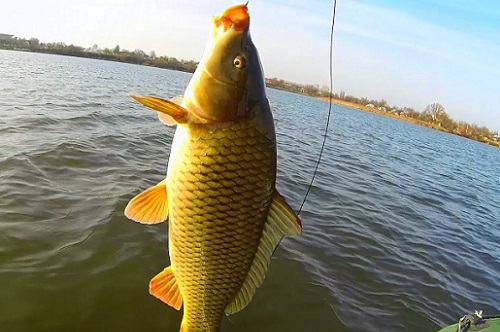
Tackle is selected depending on the estimated size of the fish.
Also, don't forget the hooks. Their size must match the nozzles. Ideally, when the bait completely covers the body of the hook, and the quality of the metal does not even allow big fish bend or break it. On average, taking into account both the approximate weight of an average carp or carp, and the arsenal of baits used, we say that the most popular are hooks of size No. 6-12 according to international numbering.
In custody
Catching carp and carp is a whole science, which is not so easy for a novice fisherman to comprehend. However, we were able to note and emphasize the main points that are worth paying attention to in the first place. After all, knowledge about how and what to catch carp and carp, what nozzles and gear can be used, makes it possible to move on to “practice” and try your hand already on the pond.
About autumn fishing for carp will be discussed in the video:


